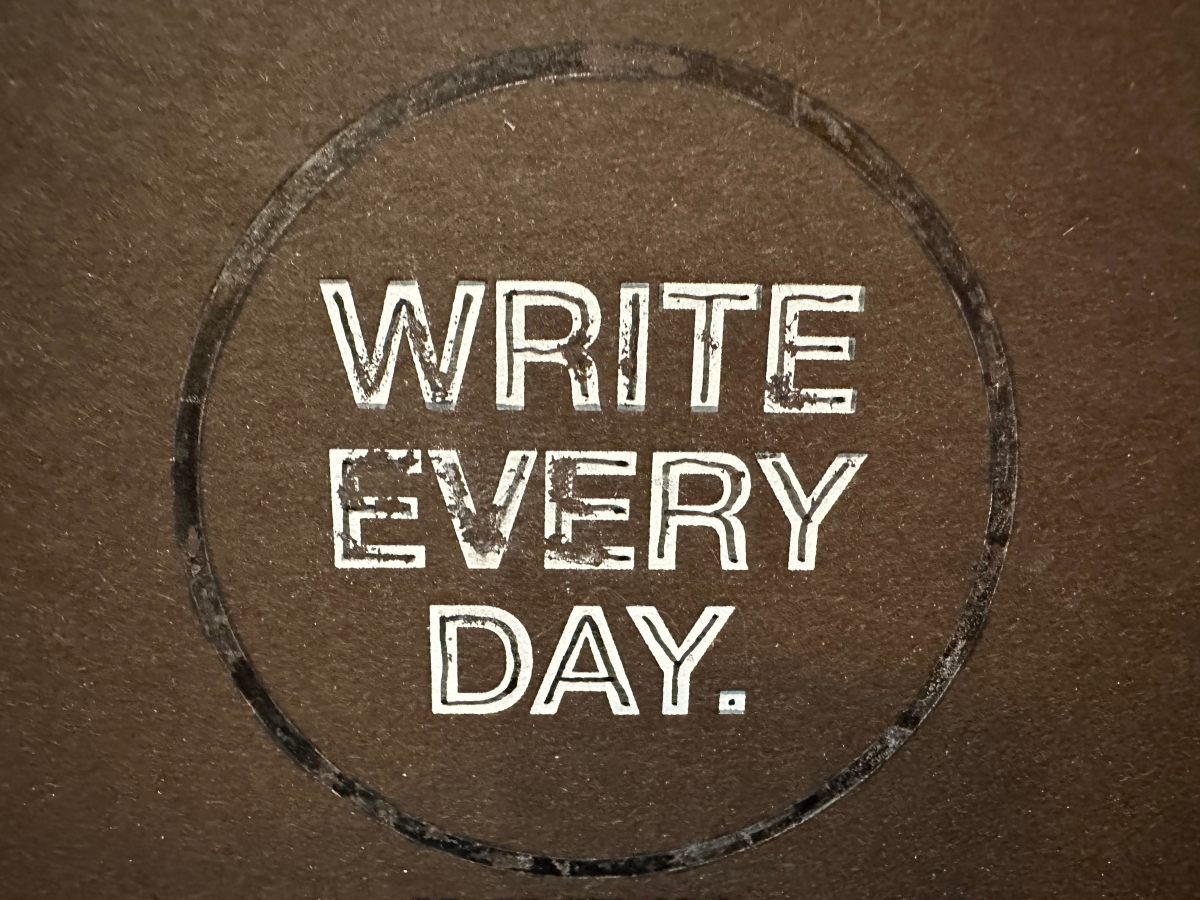I’m still working on revisions for my novel, Razor Mountain. As I read through the chapters, looking for possible improvements, I’m constantly on the lookout for repetition, repetition, repetition.
Is it bad to do the same things over and over? That depends. There’s a lot of rhythm and structure to writing, and repetition can be an important tool if you’re doing it on purpose. It can be an element of personal style or provide structure to a piece. Unfortunately, repetition is often accidental: something you naturally do without realizing, a literary crutch or a sign that you haven’t put enough thought into some aspect of the work.
This is one of those cases where reader feedback is extremely useful. It’s hard to see these problems without an outsider’s perspective, because they naturally live in our blind-spots. When a reader notices repetition, you should scrutinize it.
Shortcuts
Writing fiction is an incredible challenge, because there simply aren’t enough words to fully describe a complete character, setting, or event. All writing is inevitably cutting out information; choosing what is important and what is not. It’s not surprising that writers take shortcuts. We’re constantly looking for things like a phrase that implies a character’s entire thought process, or a description of a smell that transports the reader to a location in the story.
There are also gaps in our thinking. No writer can think through every single detail of a story. There are always shadowy areas of uncertainty lurking around the edges. Even in the areas that we do put thought into, there can be dangers.
The human mind is a little bit like a hive of bees. Sometimes all those buzzing little thoughts work in concert toward a common goal, and sometimes the subconscious goes and causes problems while the conscious mind is not paying attention. We see this every day when people over-use favorite words or insert their verbal tics without even realizing it.
The Process of Noticing
The easiest way to find these troublesome repetitions is by outsourcing the job to others! Readers who aren’t familiar with your story will have a much easier time taking it at face value. After all, you have the best version of the story in your head, and that version will get mixed up with the words on the page, no matter how much you try to keep them separate. Readers have to suss out that story from mere words on the page.
There are also ways of getting more outside your own head. Reading the story out loud is a classic trick for changing your mode of thinking and catching problems that you wouldn’t otherwise catch. Reading out-of-order, a paragraph or sentence at a time, is another trick for assessing the words without getting lost in the flow of the story.
Danger Words
I’ve already mentioned in previous posts that I’m making a list of individual words and phrases that show up too frequently in my own work. For me, many of these words are “softening” or “weakening” verbs and adverbs; words like seemed, mostly, some, early, almost.
Interestingly, you might be able to discover something about yourself and your process by catching these issues. I suspect that I use these kinds of words reflexively, as a way to avoid fully committing to a description or idea. If I’m not entirely happy with the way I’ve described something, I use these words as a way to distance myself from my own description. Of course, that reflex doesn’t make the writing better, it makes it worse.
Luckily, as I notice these words, I can now reassess the description. If I think it’s actually good, I can remove the wishy-washy language and fully commit to my original intention. If I think it’s bad, I can change it.
Another common repetition I’ve found are vague adjectives, like little or flat. These words can add some value, because they refine the reader’s mental image of an object or idea. A little door is certainly more specific than a door, and a flat boulder is more specific than a boulder. The problem is that neither of these descriptions are very specific (how little is a little door), and they’re not as evocative as other adjectives or phrases I could use.
Opinions differ, but I’ve always felt a complete ban on adjectives to be stupid and reductive. They can be useful, but they also bloat a story. They are often “unnecessary” in the sense that they could be removed without breaking the meaning of a sentence, but they add nuance and impact the feel of the story, and that can have value. I personally think that judicious use of interesting adjectives can be the frosting that makes the cake. Depending on how you write, they might even be the cake.
Bigger Problems
Not all issues of repetition exist on the level of individual words or small phrases. Bigger issues can arise on the level of paragraphs, and even chapters. These are often more difficult to identify, because they can’t be confirmed with a simple word processor “find” function, like repeated words.
The simplest kind of repetitive sentences use an identical structure over and over. This often arises in long stretches of dialogue or action:
He said, “No.”
She said, “I think you’re wrong.”
He said, “I don’t care.”
She said, “I don’t, either.”
He swung his right fist. She dodged it. He swung his knee up. She brought her hand down to block it. He jabbed with his left hand. It struck her right cheek.
These are contrived examples, but they show the kind of painful writing that comes from overly-repetitive sentence structure. These are all short sentences, but even long and complex sentence structures can feel repetitive.
Sentences have a rhythm. It can help to visualize more complicated sentences by focusing on their punctuation and conjunctions, because these are the connective tissue that combine individual phrases and clauses into a complete sentence. A series of sentences with a single conjunction (“This and that,” “That but this,” “This or that”) can also create a dull rhythm.
Even consistently long or short paragraphs can be a rhythm that readers notice, sometimes subconsciously. Lengthening or shortening sentences and paragraphs can be a useful tool for speeding up or slowing down the pacing, but when similar lengths are used consistently, regardless of the intended pacing, it can throw off the feel of a scene.
How Often is Too Often?
It’s a unreasonable and counter-productive to suggest that we should completely remove repetition from our writing. After all, it’s a useful tool for style and structure in a wide variety of contexts. I suspect there are no rules of thumb about the “correct” amount of repetition that couldn’t be taken down with a counter-example.
So, as is usual with writing, the answer to the question is, “It depends.” (Yes, I’m aware that I’m repeating the first part of this post.) There are two criteria worth thinking about: when to take a closer look, and when to make a change. It’s easy to make rules of thumb for finding potential issues, but it always pays to look at the specific context when it comes to making changes.
When I’m looking at repeated words in my own chapters, my personal warning alarms go off when I find three or more examples in a single chapter, or examples in almost every chapter. However, just because I find four instances of “nearly” in a chapter doesn’t mean I’m going to change or delete them. To decide that, I look at the specific sentence and paragraph surrounding each one. If I can think of an equally good or better word to use, I’ll change it. If I find that the word isn’t pulling its weight, I might remove it entirely. Sometimes, it’s the perfect word, and I leave it alone.
The Power of Repetition
Repetition can weaken or strengthen your writing. Repetition makes writing weaker when it’s accidental, filling in details that the writer hasn’t thought through, or revealing subconscious processes that the writer hasn’t even noticed. Repetition makes writing stronger when it’s purposeful, to achieve a stylistic effect or provide a particular rhythm or structure.
That’s why repetition is a great target for revisions. Changes can simultaneously shore up weaknesses and create new strength.











